When the levee breaks

2019.10.03
In John Steinbeck’s epic novel ‘The Grapes of Wrath’, a poor family of tenant farmers and thousands of other “Oakies” hitch up their wagons to make the trek to California in search of work and a better life. A savage drought had turned their farms into fields of dust.
Current growing conditions are nothing like those described in Steinbeck’s book, but US farming states are certainly seeing the effects of climate change – particularly with respect to irrigation.
As the earth warms, wet areas become wetter and dry areas drier. Less rainfall means less new water to refill aquifers, nature’s vast underground lakes of fresh water that thousands of American farmers, and millions worldwide, draw water from for drinking and watering crops.
A study by the University of Arizona predicts that climate change in the US will pull groundwater out of four important aquifers, faster than they can be recharged.
They include the aquifers of California’s Central Valley, the central and southern portions of the High Plains, and Arizona’s San Pedro aquifers. In a feature article, National Geographic writes that aquifer depletion will be exacerbated by climate change, which will make farming days hotter and longer, and cause more frequent droughts. Already, warmer-than-average evenings in Kansas feed-lots mean that beef cattle drink more water than they did in cooler years.
The combination of depleted aquifers and lower snow-packs due to warmer winters is also causing some of the world’s major lakes and rivers to dry up. Among the most extreme are Lake Poopo in Bolivia, the Colorado River, the Aral Sea, Lake Badwater, Lake Chad, Owens Lake, Lake Powell and Lake Mead.
Lake Powell
Lake Mead
Owens Lake
Apart from climate change, the other reason for declining groundwater is over-use. The Ogallala aquifer under the US Great Plains, the world’s bread basket, is being sucked dry at an annual volume equivalent to 18 Colorado Rivers.
The Ogallala is the world’s largest known aquifer. Around 450,000 square kilometers, it stretches from southern South Dakota through parts of Nebraska, Wyoming, Colorado, Kansas, Oklahoma, New Mexico and northern Texas.
The groundwater depletion problem is worldwide. Iran is over-using its aquifers by an average of 5 billion tons of water per year. Saudi Arabia developed an extensive irrigated agriculture based on its deep fossil aquifer, and they sucked it dry. Some Saudi farmers now pump water from wells that are 4,000 feet deep. In 2016, the country sowed its last wheat harvest, due to restricted irrigation capacity.
China is over-pumping three river basins: the Hai, the Yellow and the Huai. A 2017 study in ‘Nature’ found that in 10 years, China doubled its use of irreplaceable groundwater from underground reservoirs, and that they are draining faster than they can be replenished. Globally, the amount of irrigation water drawn from aquifers has increased by 25%.
Flooded out
For many years our species has known that melting polar ice – free-floating and attached to land – due to warmer temperatures, causes sea levels to rise. Most people have read some headline or article indicating how many cities are at risk of flooding, way in the distant future. Since human beings seem incapable of acting on an indirect, non-immediate threat, a lot of people have accepted this truth. Then they tuned out. ‘If it doesn’t affect me, right now, who cares?’
Well, a recent news story from Florida made me sit up and pay attention. Titled ‘America’s Great Climate Exodus is Starting in the Florida Keys’, this article pulls no punches. The main character is a woman whose home has been wrecked by Hurricane Irma. Her only hope of getting out of the now-worthless house she still has a mortgage on, is for the government to buy her out. The state will undoubtedly knock it down, along with hundreds of others in the Florida Keys, so vulnerable is the area to more frequent and powerful storm surges/ flooding.
When the levee breaks
Cryin’ won’t help you prayin’ won’t do you no good
Now cryin’ won’t help you prayin’ won’t do you no good
When the levee breaks mama you got to move
All last night sat on the levee and moaned
Led Zeppelin
According to a demographer at Florida State University, by 2100, 13 million Americans will need to move because their homes are in the sea’s way. The re-location will cost the government $1 million each. The sums needed are both unfathomable and unsustainable, considering that Florida is just one state likely to be underwater by then. Buyouts have already begun from homeowners living in Staten Island, Houston and New Orleans. New Jersey, North Carolina and much of Texas are also at high risk.
It’s pretty clear that $1 million per home is only going to go so far. Tens of millions of Americans will receive little to no compensation for forced evacuation. In Florida the state only has $75 million given by the federal government’s housing department to compensate Irma victims.
For most, insurance money will be insufficient to rebuild.
The referenced article points out that, 15 years after Hurricane Katrina, Louisiana is still trying to re-locate 100 people, working with a $48 million federal grant. New Jersey used a $300 million fund to purchase hundreds of homes from victims of Hurricane Sandy, but the state since 2012 has reportedly built more houses on the coast than it has bought! Florida has done the same thing, inexplicably.
The Paris Agreement aims to keep the global temperature increase this century to within 2 degrees C, ideally 1.5 degrees. Since 1981 the annual temperature rise on earth, land and sea combined, has averaged 0.17 degrees, according to the National Ocean and Atmospheric Administration ( NOAA).
Climate Central, a non-advocate climate change research group, says that increases in ocean levels are locked in, meaning they can’t be changed. Its business-as-usual scenario has temperatures rising 4 degrees C. If that were to happen, in 100 years the seas will rise 8.9 meters (29 feet), flooding some of the largest cities in the world containing up to three-quarters of a billion people (460-760 million). They include New York, Shanghai, Hong Kong, Mumbai, Jakarta, Hanoi, Tokyo, Osaka and Rio de Janeiro.
Among the US cities likely to be submerged by 2100 are New Orleans, Miami, Houston, Atlantic City and most of Charleston, South Carolina.


Small islands, some barely poking above the ocean surface, are particularly vulnerable to sea rise and storm surges. Most of these atolls are expected to be uninhabitable by the year 2050, says a 2018 study published in the journal ‘Science Advances’. They include the Maldives, Seychelles and parts of Hawaii. Hundreds of thousands of island residents would be driven from their homes, if not by flooding, by a lack of fresh water.
“The tipping point when potable groundwater on the majority of atoll islands will be unavailable is projected to be reached no later than the middle of the 21st century,” The Independent quoted Dr. Curt Storlazzi, a researcher at the US Geological Survey (USGS) and lead author of the report.
To be fair, some cities have recognized the problem and are putting money aside for flood mitigation, such as building seawalls higher and bulking up levees. But the budgets seem woefully inadequate compared to the estimated need, which includes not only building sea walls but shoring up water and sewer treatment plants, military bases, industrial areas and ports. And they haven’t decided who will pay. A few examples:
- In Boston, it’s estimated to cost $2.4 billion to protect the city and its many low-lying neighborhoods from flooding. A harbor barrier that would’ve cost $6-12 billion has been abandoned as too expensive.
- Several programs to guide resiliency and rebuilding efforts have started in New York, but nothing concrete has come to fruition. The price tag for defending coastal New York City? $10 billion. In May the city started installing sandbags around lower Manhattan as a temporary measure.
- The Virginia state legislature passed the Virginia Shoreline Resiliency Fund in 2016, but has yet to fund the program. Good luck asking the cities. Norfolk VA, where streets regularly flood, is a billion dollars in debt.
- In Harris County, Texas, which includes Houston, voters reeling from Hurricane Harvey approved a $2.5 million flood protection bond. It’s estimated that $30 billion is needed to fortify the 2,500 miles of streams and man-made channels, just to handle a 100-year rainfall.
- The sea level in Florida, the most at-risk state, has risen up to 8 inches higher than it was in 1950; it now rises one inch every three years. Flood mitigation here is more complicated than elsewhere because the bedrock is porous limestone. This allows groundwater to flow up, from below ground, and sea water to seep under sea walls. Protecting Florida from immersion would cost $72 billion.
The Center for Climate Integrity estimated that by 2040, building sea walls for storm surges needed to protect US coastal cities with populations over 25,000, is expected to cost $42 billion.
Federal funding for these projects is stretched, although arguably a lot more money could be pulled from other areas. The US budget in 2020 is $4.746 trillion. 60% of that is spent on Social Security, Medicare and Medicaid. Nearly a trillion, $989 billion, is allocated to defense. That defence number does not include nuclear forces or special ops.
FEMA, the Federal Emergency Management Agency, and the US Army Corps of Engineers are too probable sources. FEMA does have a $160 million program to fund projects that reduce the risk of flood damage, but it only covers properties insured by the National Flood Insurance Program which is $25 billion in debt.
The Army Corps has a $98 billion backlog of construction projects, yet only receives about $2 billion a year. President Trump has been taking money out of base maintenance and housing programs for servicepeople.
Beyond the billions in infrastructure-hardening projects needed to hold back the ocean, there’s the cost of re-locating millions of people if and when it’s found that the mitigation measures aren’t enough. Is it better to keep spending to keep people safe, or abandon the whole enterprise and let cities flood?
Where will these people go? The only direction they can go is Inland. As more and more coastal cities are swamped by rising seas, and their drinking water made un-potable due to saltwater intrusion of coastal aquifers, inland cities like Chicago, Toronto, Winnipeg, Calgary will be deluged by “climate refugees”.
The numbers escaping from floodwaters will far exceed the regular boatloads of North African migrants we see crossing into Europe.
Competition for already-stressed aquifers will be fierce. The prices of food, houses, rent, all basic necessities will go through the roof.
The atmosphere will be hotter and more polluted, as levels of CO2 and other heat-trapping gases keep increasing due to the “greenhouse effect”. As lakes, rivers, streams and aquifers dry up, water and power will become more scarce.
With cooling tower water rationed, industries will struggle to remain profitable.
Already we are seeing conflicts between industry and local populations especially in arid climates where fresh water is hard to come by.
Concerns are being raised in Asia about the hundreds of new power plants proposed, even as more areas experience droughts. The lack of rain reduces stream flow required to feed water towers that cool down coal, natural gas and nuclear power plants. UPI reports the problem is expected to be worst in Mongolia, Southeast Asia and parts of India and China, where 400 gigawatts of new coal-fired power plants are expected to enter production by 2030.
Mining companies have long faced scrutiny from environmental and community activists, but until now, it’s been a question of how much water is being taken and the quality of the water that is discharged. Soon, miners may have a hard time even getting water to run their operations. A new report from Moody’s Investor Service states that many countries including Peru, Chile, Australia, South Africa and Mongolia have large mines likely to face dwindling water supplies. Some countries are anticipating water scarcity and have restricted miners’ access to it.
Chile for example is expected to double the number of areas protected from mining. Large companies with deep pockets are addressing the problem by turning to desalination; others are finding ways to recycle water during the processing cycle. BHP spent over $3 billion for a desalination plant at Escondida in Chile. Southern Copper’s Tia Maria project includes plans for a $100 million desalination facility.
Severe droughts like those experienced in Cape Town, South Africa will be common. People will line up for bottled water. Regular blackouts are likely too, with only so much water available to run turbines that generate electricity. Taken to the extreme, food will spoil due to unreliable refrigeration. People and animals will die from thirst. Crime will escalate as citizens fight over rarer and more valuable resources that we currently take for granted.
There will only be so many jobs, so many places to live, and finite food and water resources, conjuring up a teeming mass of homeless, hungry and unemployed. Think Mad Max, times 10.
While some worry about the future, others are looking to take advantage.
David Burt, who used to manage a $1 trillion investment portfolio, has started his own firm, DeltaTerra Capital, to help clients manage climate risk. His company targets residential mortgage-backed securities – mis-management of which presaged the financial crisis – with exposure to flood prone places like Texas and Florida. Burt’s investment thesis is that these securities – pools of home loans, really – have not priced climate risk into their values. Flood maps drawn by the federal government are outdated, meaning that fewer people are required to have flood insurance than those who are actually at risk.
FEMA is planning to re-rate the flood risk of homes in a year’s time. When it does, Burt expects properties that move from low to high-risk will experience a major correction. He’s essentially betting against the housing market, like in the movie, ‘The Big Short’.
“The bet I’m making is that many regional markets will experience large price declines in response to increasing costs related to the geography-specific risks,” Burt told Reuters.
Sea ice loss —-> feedback loops
As we know, rising ocean levels are caused by melting ice, which is due to higher surface and ocean temperatures.
We can disagree on the causes of global warming, natural or man-made (Read Climate Armaggedon, Part 5 of AOTH’s series on climate change, to learn about the Malankovitch Cycles and the Younger Dryas) but we can say with certainty that the temperatures on planet Earth are rising. According to NASA’s Goddard Institute for Space Studies (GISS), the average global temperature has increased by about 0.8° Celsius (1.4° Fahrenheit) since 1880.
According to the US Geological Survey, “The evidence of a warming trend over the past century is unequivocal.” Examples of such evidence include stream flow records showing an earlier peak in spring runoff; borehole temperature records in Alaskan permafrost as well as water temperature records on land and sea show the warming trend. Other evidence includes glacial retreat, more intense rainfall, and changes in the timing of plant emergence and spring migrant birds.
Current climate models predict that Earth’s average temperature will keep rising.

The warming of the Earth’s surface has caused a widespread retreat of the glaciers at both poles. According to NASA between 2002 and 2006 Greenland lost 60 cubic miles of ice; in Antarctica it was 36 cubic miles from 2002-05. All of this melting ice has caused sea levels to rise, from between seven and eight inches over the last 117 years, NASA states, with the most rise occurring since 1993.
The latest International Panel on Climate Change (IPCC) report finds the ice melt from Greenland, Antarctica and the world’s largest glaciers is accelerating, at a rate of 653 billion tonnes a year.
Arctic snow cover has been depleted by more than half, and Arctic sea ice in September, the annual low point, is at its second-lowest on record. May and August saw the highest temperatures ever recorded in the Arctic, which is warming twice as fast as the rest of the world.

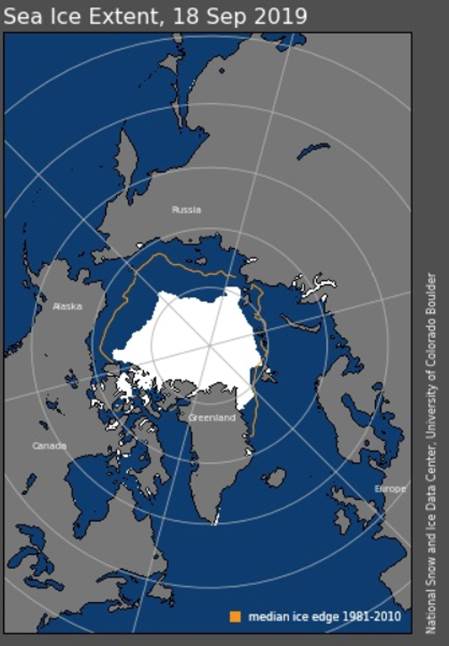
As a result, seas are now rising 2.5 times faster than the period from 1900-1990. IPCC predicts they will increase three feet by 2100, “with many fewer fish, less snow and ice, stronger and wetter hurricanes and other, nastier weather systems,” according to a very recent article by Associated Press.
The report also notes that oceans are getting more acidic and losing oxygen (1 to 3% has been lost in upper levels since 1970), as they absorb +90% of the excess heat from carbon pollution, plus much of the carbon dioxide in the atmosphere.
NASA states that “climate feedbacks” could double the amount of warming caused by carbon dioxide alone.
A well-known feedback loop is the disappearance of snow and ice at the poles. This exposes dark ocean to sunlight, warming the oceans. When ice covers the poles, the sunlight is reflected back to the atmosphere, keeping the oceans cool. As the planet keeps warming, more ice disappears, exposing more water, further raising ocean temperatures, and sea levels.
Climate scientists have also been raising concerns that rising temperatures could throw a wrench into the conveyor-like currents system that moderates hot and cold climates throughout the world.
In 2015 ocean temperatures were the highest in 136 years. Warmer seas and overfishing are pushing temperate species towards the poles where they face greater competition for food. Warmer ocean temperatures also cause acidification, which stunts the growth of corals and shell-based creatures like oysters. The destruction of coral reefs is a major problem resulting from climate change, since they provide critical habitat and food for many species in the reef ecosystem.
The carbon cycle is another dangerous feedback loop. NASA estimates that the oceans and land ecosystems (plants, trees) absorb around half of emissions released through the burning of biomass and fossil fuels. But when the oceans warm, they absorb less carbon, meaning more goes into the atmosphere. The poles are warming at a much faster rate than the rest of Earth. This means the most dramatic effects of climate change are being felt in the Arctic and Antarctic. One of the most potent examples of this is melting permafrost. As the Arctic tundra thaws, it exposes methane, a greenhouse gas that is about 30 times more powerful than CO2, in terms of its ability to trap heat.
Methane is also released in large quantities through oil and gas development, as discussed further down in the article.
Droughts—> water shortages
There’s a lot of water on this planet – an estimated 326 million trillion gallons or 1,260,000,000,000,000,000,000 liters. That makes it hard to believe that there are somewhere between 780 million to one billion people without basic water supplies and that more than 2 billion people lack the requirements for basic sanitation.
Global demand for fresh water may outstrip supply by as much as 40% in 20 years if current fresh-water consumption trends continue. 98% of the world’s water is in the oceans – which makes it unfit for drinking or irrigation because of salt. Just 2% of the world’s water is fresh, but the vast majority of our fresh water, 1.6%, is in a frozen state, locked up in the polar ice caps and glaciers. Our available freshwater (.396% of total supply) is found underground in aquifers and wells (0.36%) and the rest of our readily available fresh water, 0.036%, is in lakes and rivers.
In sum, there are 326 million trillion gallons of water, but less than 1% is fresh.
The World Water Development Report warns over 5 billion people could see water shortages by 2050, leading to conflicts over water unless actions are taken to reduce stress on rivers, lakes, wetlands and reservoirs.
In 2018 it was Cape Town hit by a water crisis owing to a drought. This year the focus is on Australia. Sheep and cattle farmers in New South Wales, besieged by a three-year drought, are forecast to run out of water by mid to late 2020.
Local authorities have been trucking in fresh water, a pipeline has been built to a local dam, and they will soon start drilling for new supplies, Reuters reports.
The scarcity of water has sharply increased its price. 10,000 liters of drinking water costing over AUD$169 is double the cost of pre-drought water.
Meanwhile a continent away in Zimbabwe, the capital Harare has shut down its main waterworks because the government lacks enough foreign currency to pay for treatment chemicals. A drought thought to be caused by El Nino has lowered dam levels, restricting the capacity of cities and towns to supply water. A treatment plant has already closed due to two small dams drying up. The larger Morton Jaffray treatment plant has halved its capacity. The biggest concern regarding the water shortage is the return of cholera, a waterborne disease that last year killed about two dozen people in Harare due to burst sewers and not enough water.
Poisoning the well
If droughts and over-use weren’t enough to stress already scarce water supplies, we have sources of drinking and irrigation water being massively polluted by industry. Two of the worst sectors are agriculture and hydrocarbon extraction.
Water quality has always been of utmost importance to the health of human populations. Unsafe water sources and open sewers in the Middle Ages led to plagues that decimated villages and towns. Chlorine was first discovered in Sweden in 1744 but it wasn’t until the 1890s that chlorine started being used in drinking water to kill pathogens. Chlorination began in Britain and expanded to the United States in 1908 and Canada in 1917. Today chlorination is the most popular method of treating/ disinfecting drinking water.
However despite the advance of science, many freshwater supplies are getting fouled. The Guardian reported that since the 1990s, pollution has worsened in almost every river in Africa, Asia and Latin America. The situation is expected to deteriorate due to runoffs of fertilizer and other agrochemicals that lead to the growth of pathogens and algae blooms. About 80% of industrial and municipal wastewater is discharged without treatment, the newspaper states.
In Iowa, decades of farming with fertilizers and manure is taking its toll on the soil, which is showing signs of breaking down, no longer able to hold the nutrients. Nitrates, a soluble form of nitrogen, are being found in well water, at quantities way beyond safe levels.
According to the National Cancer Institute, drinking water at 5mg/ liter of nitrates or above can cause cancer and birth defects. Up to 290,000 wells not legally required to be tested are at risk, along with 120 waterworks that exceed 10mg/l of nitrates, states a report from the Environmental Working Group.
Just as bad, the polluted water is finding its way into the Mississippi River that flows all the way to the Gulf of Mexico. There, it accumulates into oxygen-deprived “dead zones” devoid of marine life. Two years ago a dead zone estimated at 8,200 square miles, roughly the size of New Jersey, was spotted in the Gulf.
The reasons for ocean dead zones are most commonly attributed to toxic chemicals and human waste (eutrophication – high levels of nutrients), infiltrating the water near coastlines. The low oxygen levels created favor jellyfish as they can thrive in oxygen depleted water whereas fish can’t. Oceanographers first began noticing ocean dead zones in the 1970s, and instances of dead zones have been increasing ever since – a 10-fold global increase over the last 40 years. Large lakes can also have dead zones.
Turning to the oil and gas industry, an exponential increase in the practice of hydraulic fracturing (fracking) has on the plus side raised oil production so much that the United States has flipped from a net oil importer to a net exporter, in only around 10 years. The negative is that break-neck production has come at a huge cost to the environment.
Last year a study from Duke University found that toxic wastewater from fracking jumped 14-fold between 2011 and 2016. By 2030 it could be 50 times more – if US shale oil lasts that long. We have our doubts. Read The Red Queen Syndrome to learn why.
Not only is more wastewater being produced from tight oil plays, and finding its way into the environment; fracking also uses, and destroys, billions of gallons of fresh water. The amount of water used per well skyrocketed 770% in five years, according to the Duke study, while toxic wastewater produced in year 1 of production shot up 1,440%. Data from 1,200 wells were studied over five years.
Frackers don’t care where they drill their wells, either – many are in water-stressed areas, such as the Permian and Eagle Ford Basins. And it’ll only get worse. The federal government is reportedly planning a million more shale oil wells that will be fracked over the next 20 years, meaning trillions of gallons of water used.
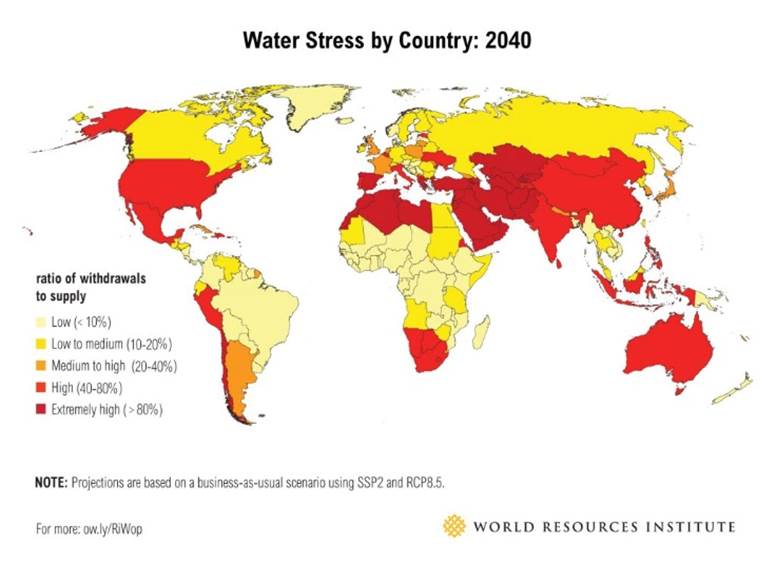
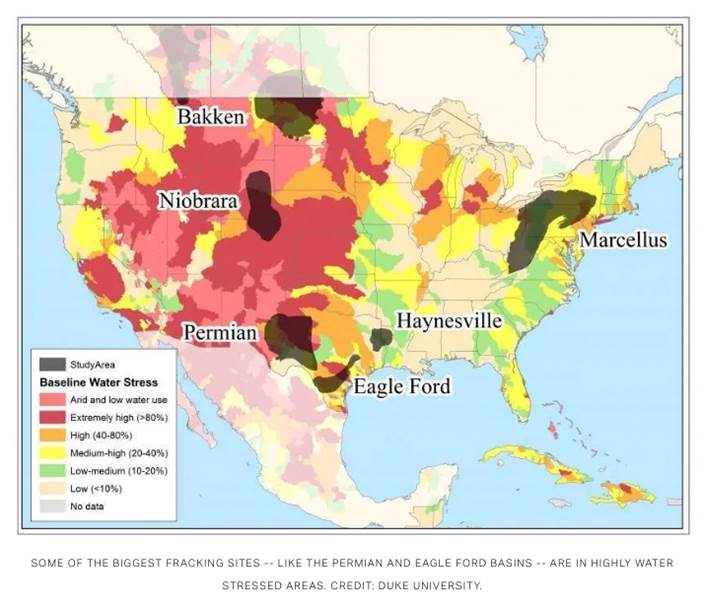
Fracking just one well can use 2 to 8 million gallons of water with the major components being water (90%), sand or proppants (8 to 9.5%), and chemicals (0.5 to 2%). One 4-million-gallon fracturing operation uses from 80 to 330 tons of chemicals and each well will be fracked numerous times. Many of these chemicals have been linked to cancer, developmental defects, hormone disruption, and other conditions.
Cracked wells and rock movement frequently leak fracking fluid and gases into nearby groundwater supplies. Fracturing fluid leakoff (loss of fracturing fluid from the fracture channel into the surrounding permeable rock) can exceed 70% of injected volume.
Methane concentrations are 17 times higher in drinking-water wells near fracturing sites than in normal wells. Remember, methane is 30 times more potent as a greenhouse gas than CO2. Hydraulic fracturing increases the permeability of shale beds, creating new flow paths and enhancing natural flow paths for gas leakage into aquifers.
The recovered waste fluid – water contaminated with chemicals and anything that water has come in contact with, meaning heavy metals and minerals – is often left in open-air pits to evaporate, releasing harmful volatile organic compounds (VOCs) into the atmosphere, creating contaminated air, acid rain and ground-level ozone.
Some of the recovered waste-water is injected deep underground in oil and gas waste wells or even in saline aquifers. There are serious concerns about the ability of these caverns and aquifers to handle the increased pressure and in the US, evidence shows that deep-well injecting is linked to the occurrence of earthquakes.
According to the industry’s own numbers just 60 to 70% of the fracturing fluid is recovered. The remaining 30 to 40% stays in the ground and is not biodegradable.
Closer to home, a plan by Repsol, a large energy company, to extract 1.8 billion liters of water from a tributary of the North Saskatchewan river is meeting strident opposition from residents of Clearwater County, Alberta.
Repsol’s application was approved by the Alberta Energy Regulator despite the fact that the Clearwater River supplies drinking water for 2.5 million people and is the only source of tap water for Edmonton.
I’ve written several articles about the dangers of fracking and most recently the insane plan by the BC government to build an LNG industry based on hydraulic fracturing. Find them in the Archives
Conclusion
Rising seas. Depleted water supplies. Polluted groundwater. The common denominator in all these real and worsening problems is, of course, the decline in the availability of fresh water.
Global warming or climate change is real. We have incontrovertible evidence that the planet is warming. What’s uncertain is why it’s warming. Increased greenhouse gases from the industrial era are only partly to blame. There is also very strong science to indicate global temperature increases are down to climate cycles that don’t change for thousands of years. It’s a valid argument to say that man-made emissions have just speeded up what was already happening naturally.
Global warming has a direct impact on water supplies. Melting polar ice both free-floating and land-locked is raising ocean levels. Climate models predicted it but we’re already seeing the evidence, in low-lying islands and places like Florida and Texas where more frequent hurricanes cause storm surges that regularly trash homes and are making certain coastal areas uninhabitable.
Changing climate patterns are causing droughts and water shortages, affecting not only residents but industries that are having to find new, expensive ways of getting water, like de-salination.
Most alarming is how water is being treated as an almost worthless commodity by the fracking industry, which pillages lakes and rivers then destroys the fresh water by adding so many chemicals and sand to render it un-usable. Agricultural runoff is also disturbing for its potential to not only make people very sick, but cause irreparable harm to the oceans.
It’s all very apocalyptic, but this is an investment newsletter after all, so we’d be remiss if we didn’t recognize that where there is chaos, there is opportunity. The trader who plans to short the housing market based on properties vulnerable to flood risk is one example. At AOTH we are interested not only in ways to protect oneself from climate change but to profit from it. This could be done not only by capitalizing on negative events such as flooding – admittedly questionable, ethically – but via technologies that limit emissions, provide ways to mitigate sea rise, or combat other manifestations of rising global temperatures.
Richard (Rick) Mills
subscribe to my free newsletter
Ahead of the Herd Twitter
Legal Notice / Disclaimer
Ahead of the Herd newsletter, aheadoftheherd.com, hereafter known as AOTH.
Please read the entire Disclaimer carefully before you use this website or read the newsletter. If you do not agree to all the AOTH/Richard Mills Disclaimer, do not access/read this website/newsletter/article, or any of its pages. By reading/using this AOTH/Richard Mills website/newsletter/article, and whether or not you actually read this Disclaimer, you are deemed to have accepted it.
Any AOTH/Richard Mills document is not, and should not be, construed as an offer to sell or the solicitation of an offer to purchase or subscribe for any investment.
AOTH/Richard Mills has based this document on information obtained from sources he believes to be reliable but which has not been independently verified. AOTH/Richard Mills makes no guarantee, representation or warranty and accepts no responsibility or liability as to its accuracy or completeness. Expressions of opinion are those of AOTH/Richard Mills only and are subject to change without notice. AOTH/Richard Mills assumes no warranty, liability or guarantee for the current relevance, correctness or completeness of any information provided within this Report and will not be held liable for the consequence of reliance upon any opinion or statement contained herein or any omission. Furthermore, AOTH/Richard Mills assumes no liability for any direct or indirect loss or damage or, in particular, for lost profit, which you may incur as a result of the use and existence of the information provided within this AOTH/Richard Mills Report.
AOTH/Richard Mills is not a registered broker/financial advisor and does not hold any licenses. These are solely personal thoughts and opinions about finance and/or investments – no information posted on this site is to be considered investment advice or a recommendation to do anything involving finance or money aside from performing your own due diligence and consulting with your personal registered broker/financial advisor. You agree that by reading AOTH/Richard Mills articles, you are acting at your OWN RISK. In no event should AOTH/Richard Mills liable for any direct or indirect trading losses caused by any information contained in AOTH/Richard Mills articles. Information in AOTH/Richard Mills articles is not an offer to sell or a solicitation of an offer to buy any security. AOTH/Richard Mills is not suggesting the transacting of any financial instruments but does suggest consulting your own registered broker/financial advisor with regards to any such transactions
Legal Notice / Disclaimer
Ahead of the Herd newsletter, aheadoftheherd.com, hereafter known as AOTH.Please read the entire Disclaimer carefully before you use this website or read the newsletter. If you do not agree to all the AOTH/Richard Mills Disclaimer, do not access/read this website/newsletter/article, or any of its pages. By reading/using this AOTH/Richard Mills website/newsletter/article, and whether you actually read this Disclaimer, you are deemed to have accepted it.
Share Your Insights and Join the Conversation!
When participating in the comments section, please be considerate and respectful to others. Share your insights and opinions thoughtfully, avoiding personal attacks or offensive language. Strive to provide accurate and reliable information by double-checking facts before posting. Constructive discussions help everyone learn and make better decisions. Thank you for contributing positively to our community!

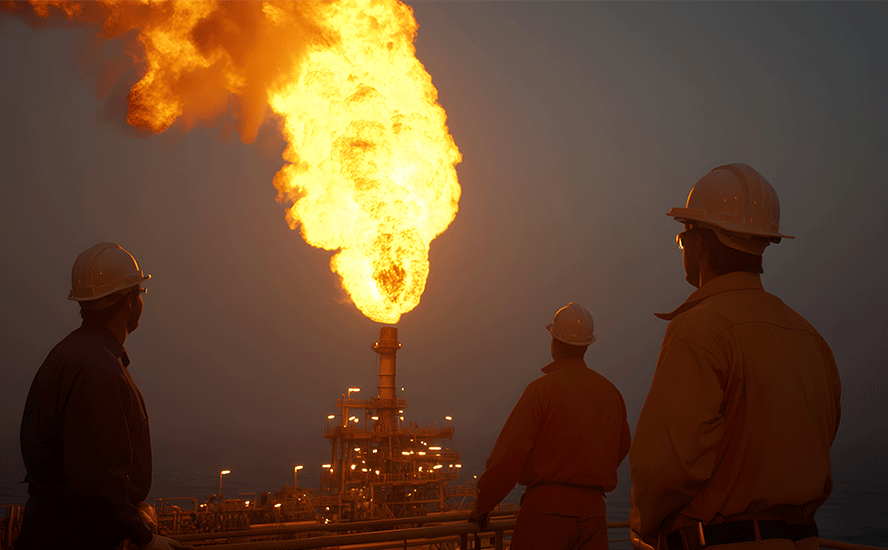



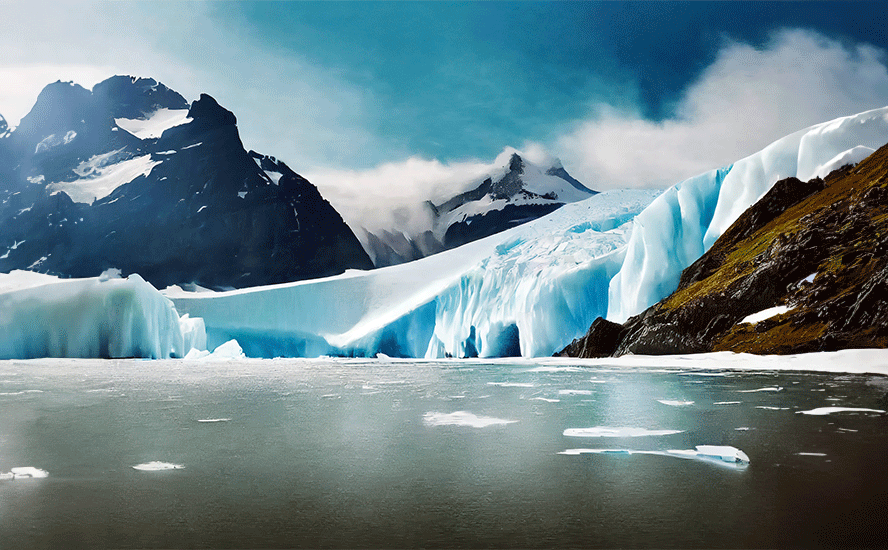



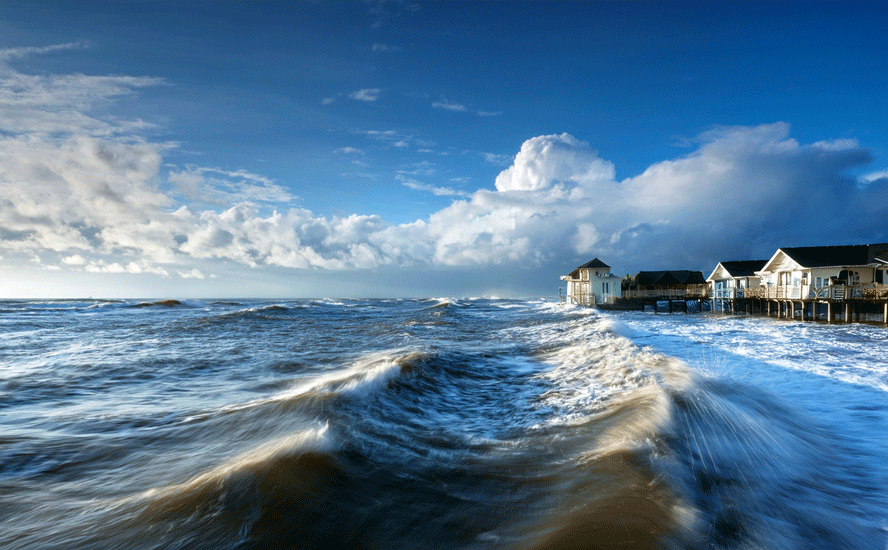
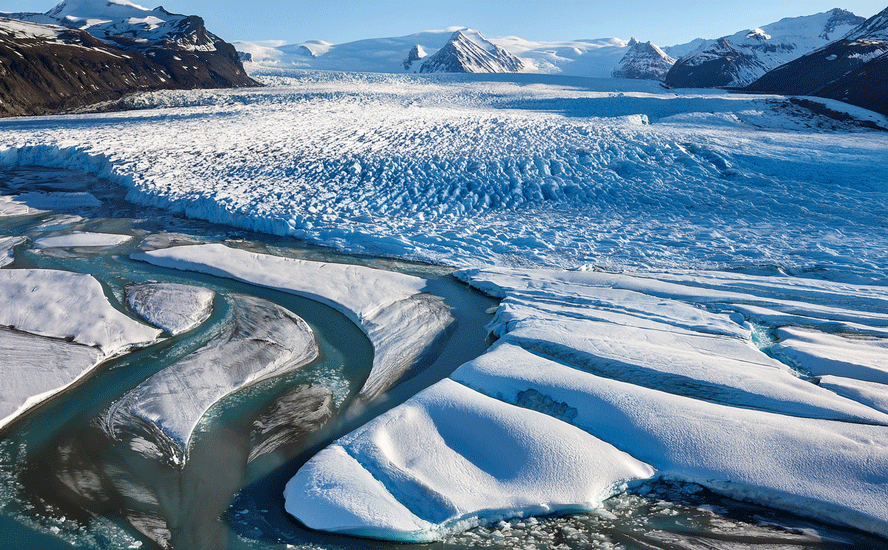


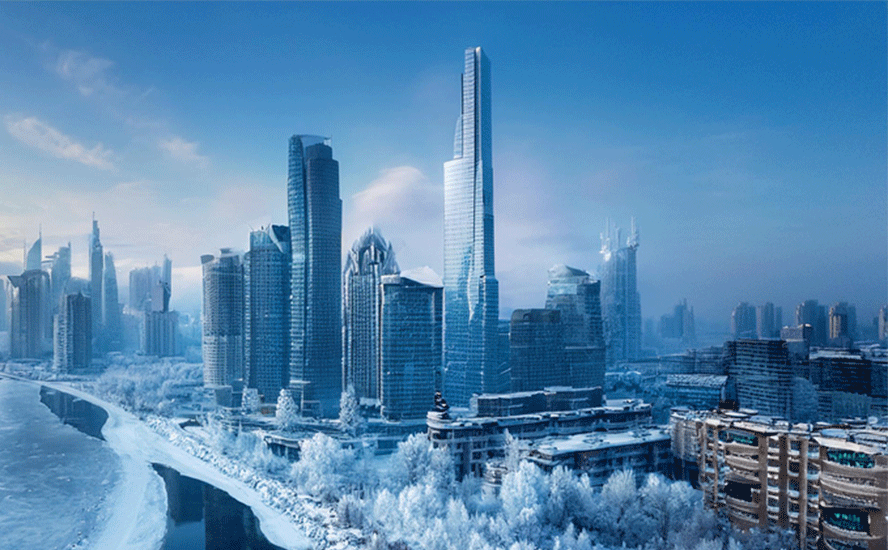

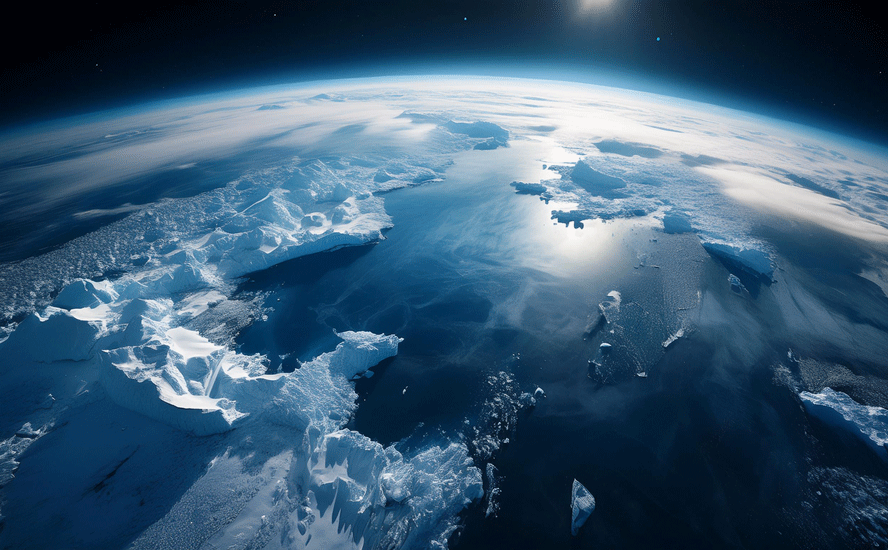






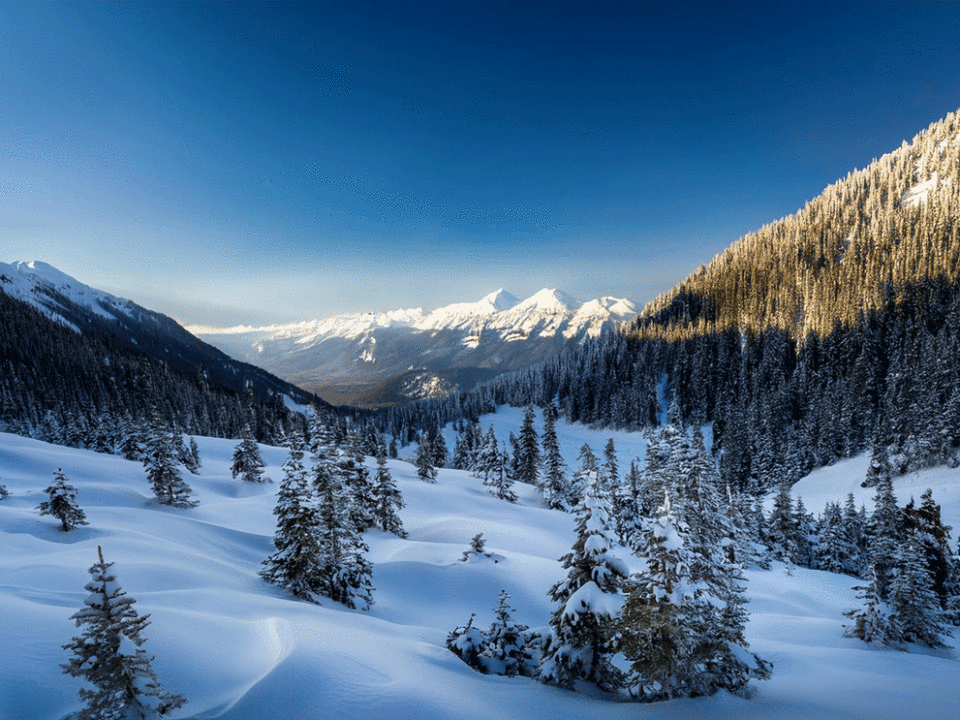




Thank you so much for this content! I found it incredibly informative and well-written. Keep up the great work!
thank u so muchh administ :))
This article was incredibly helpful and well-written. Thank you for sharing such valuable information!